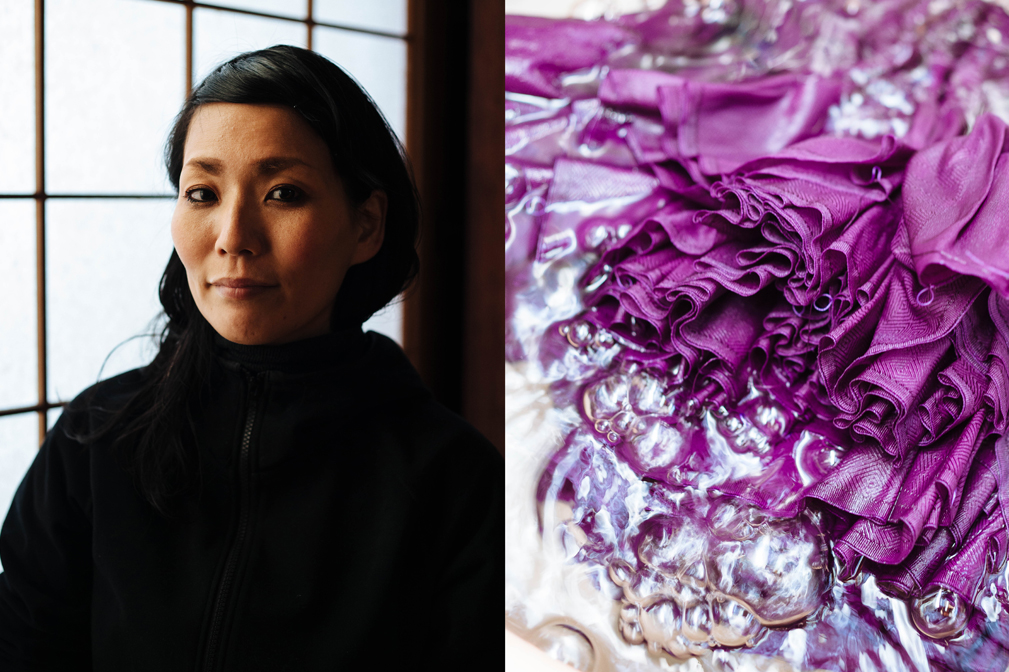Thread by Thread
Essays by Prairie Stuart-Wolff
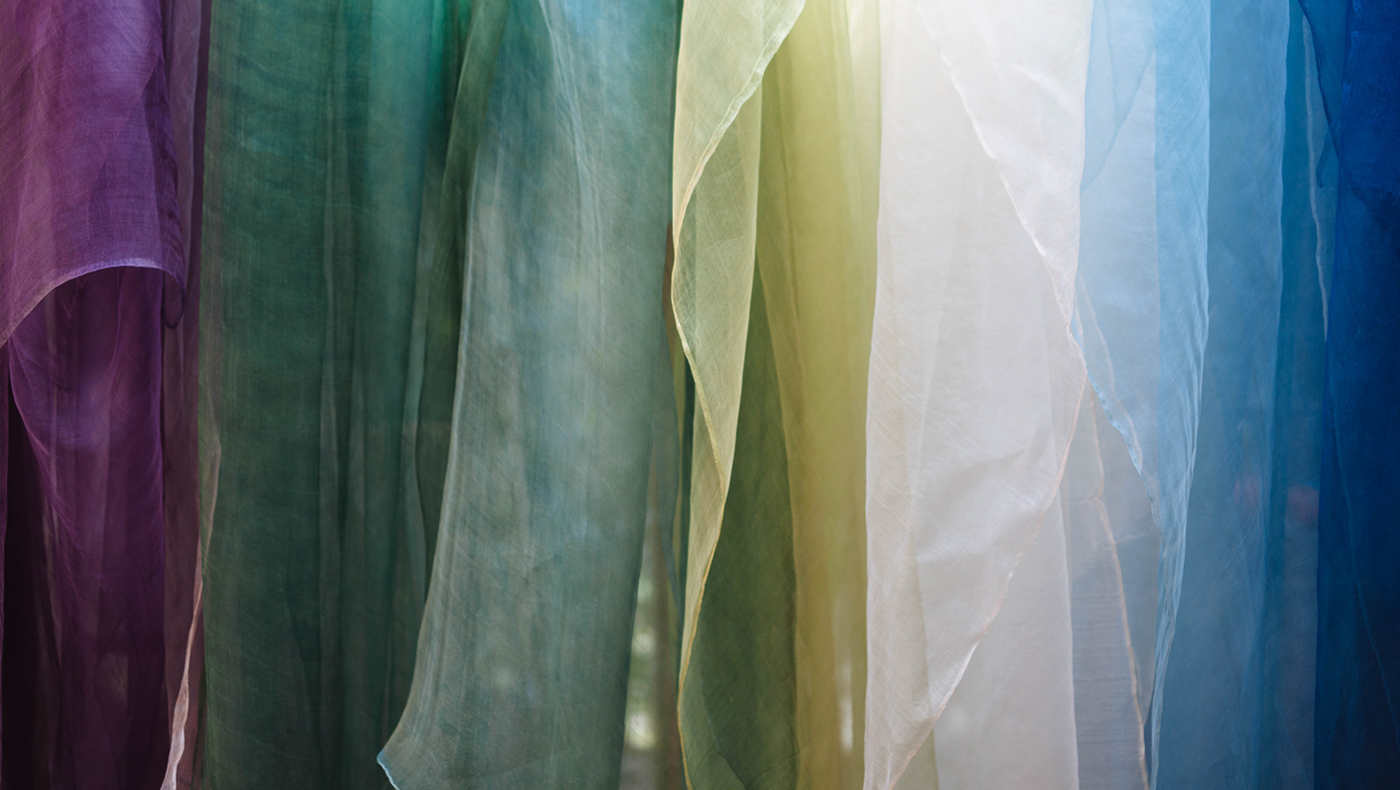
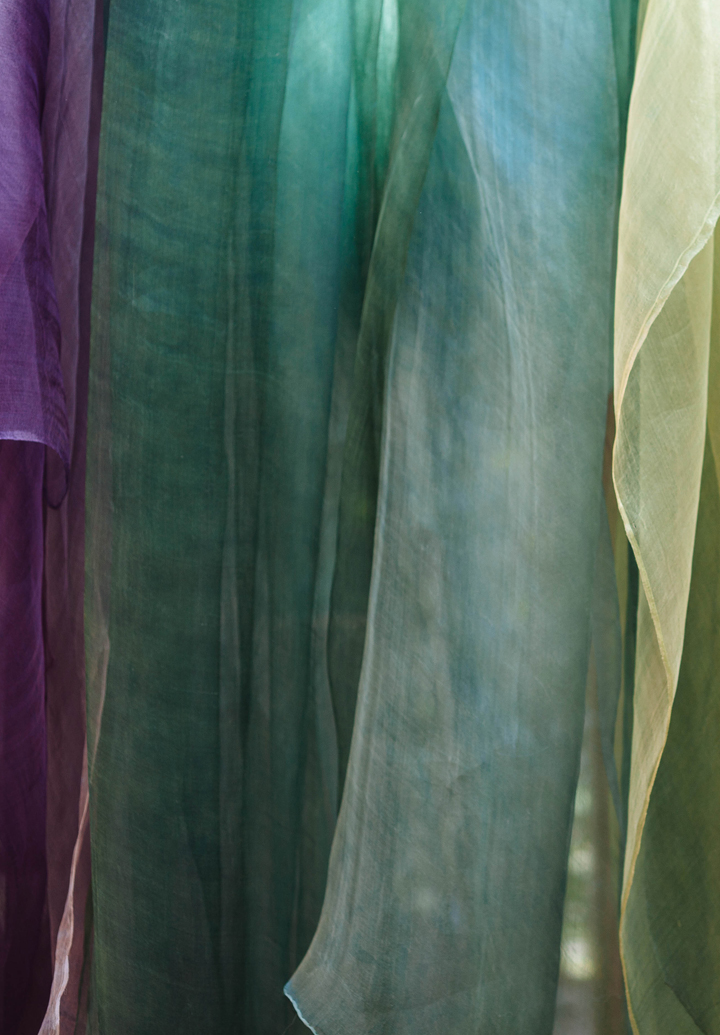
The Dyer’s Work
Sarasa Yoshioka, sixth-generation master dyer at the Yoshioka textile atelier in Kyoto, works with quiet passion and persistence. Even on a day off her hands grow restless and her mind wanders back to work, work that takes her far into the depths of antiquity and also towards a vision of the future.
The dyer’s work is a conduit for color. From the fiber of plants into the fibers of paper, thread, and cloth, color is coaxed forth with great patience. Colors derived from natural sources are vibrant and speak to a universal aesthetic that almost everyone can agree to call beautiful. Whether pale or deep, the colors drawn from nature are clear and true, piercing while soft, warm, and pulsing with energy.
The dyers work is a conduit to the natural world, both above and below the earth’s surface. Through complex processes coupled with intuition and experience, a rainbow of vivid colors hidden inside bark, stalks, berries, leaves, flowers, roots, and nuts is released through the element of water. The atelier’s water is drawn from 100 meters below where the temperature never wavers and feels warm to the touch in winter and refreshingly cool in summer. Repeatedly submerged in dye baths, threads and cloths of silk and linen are layered with color until just the right hue is achieved.
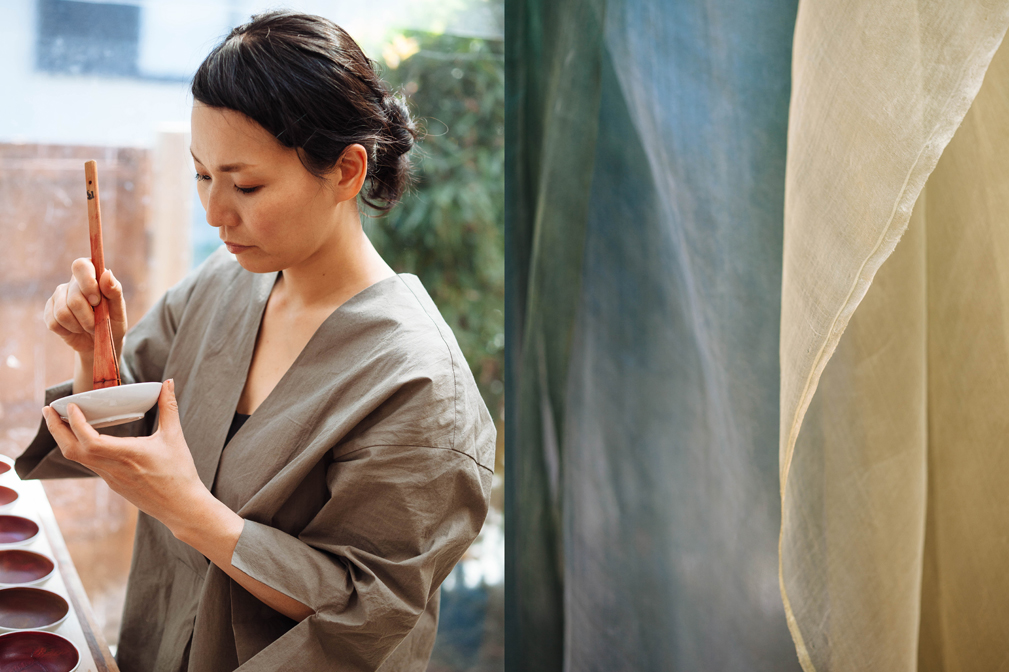
The dyer’s work is a conduit to the past. When chemical dyes arrived from Europe they were lauded as a great modern technological advancement and quickly supplanted plant based dyes across the land. The knowledge and methods honed over centuries of dying with natural dyes was lost. In order to return the atelier entirely to these lost methods, Yoshioka’s father and grandfather referred to ancient texts from the Heian period, the Golden Age of Japan, to learn the very practices their own predecessors had once employed. Today the atelier continues to undertake historical restoration and replication projects to promote and further the great marvel that was Japan’s skill in natural dying centuries ago and Yoshioka herself regularly studies historical artifacts from the Shosoin treasure house at Todaiji Temple in Nara.
The dyer’s work is a conduit to living history. Each year she feels the weight of responsibility as she brushes sheets of washi with a crimson color extracted from dried safflower petals and golden yellow made from the fruits of gardenia. These sheets of dyed paper are delivered to Todaiji Temple to be fashioned by the hands of monks into paper camellias in preparation for Shuni-e, a ceremony held each March since well over a millennia ago.
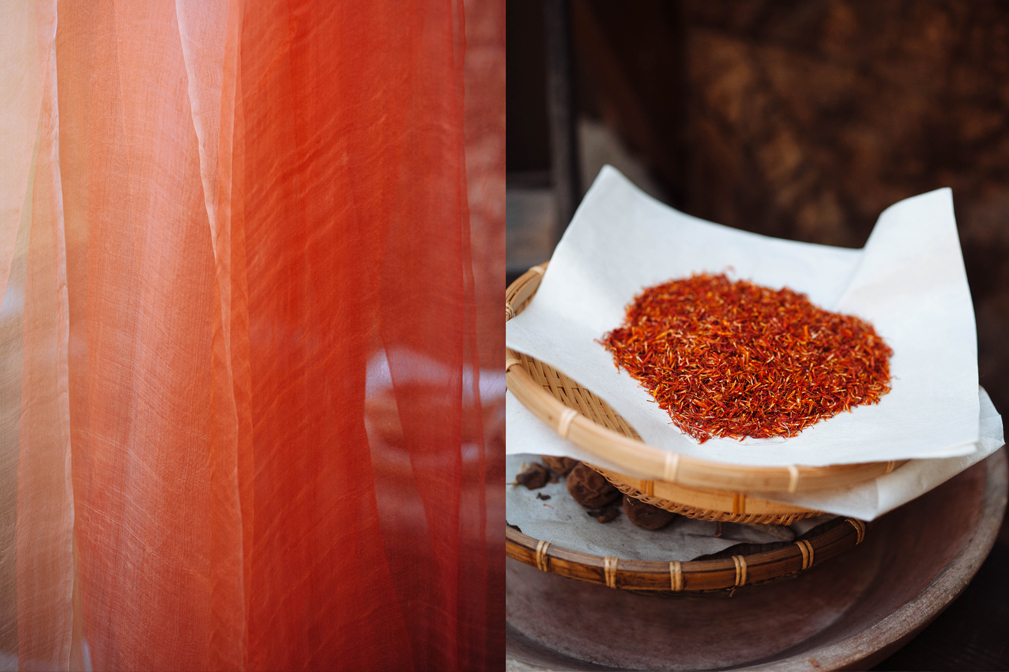
Color makes a powerful impression in both its presence and its absence. Today, in an era far beyond the golden age of natural dyes, the soil is depleted. The plant world is less potent. It requires more and more raw material to achieve the same concentration of dye. Plants once found in abundance are rare, and some considered endangered even, like purple gromwell with roots that give up an especially royal shade. The atelier is now tasked with preserving the ingredients of the trade. Yoshioka studies the ecology of the plants in which the colorants for her dyes are housed and works with farmers to ensure their vitality in the face of environmental challenges. In this role, as a steward of the land, the dyer’s work is a conduit to the future.
